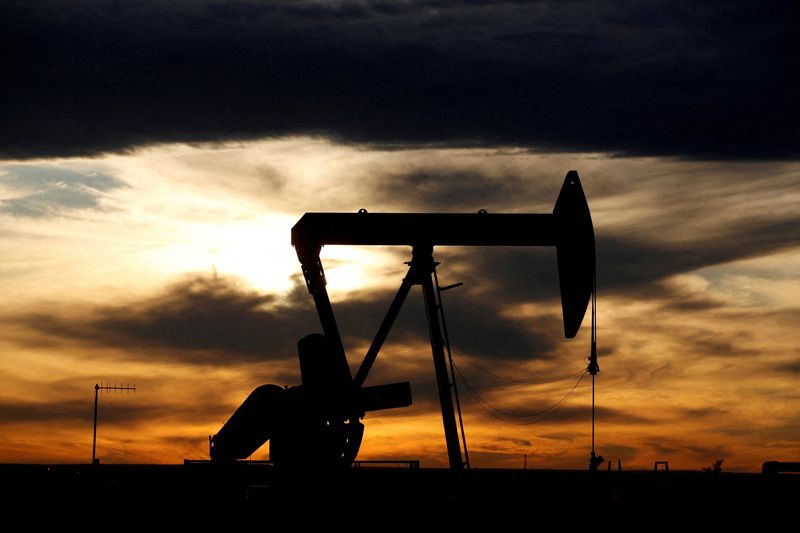
By Arathy Somasekhar
HOUSTON (Reuters) -Oil prices were little changed at their settle on Friday as markets weighed Chinese demand and interest rate-cut expectations after data showed cooling U.S. inflation.
Brent crude futures closed up 6 cents, or 0.08%, at $72.94 a barrel, while U.S. West Texas Intermediate crude futures rose 8 cents, or 0.12%, at $69.46 per barrel.
Both benchmarks ended the week down about 2.5%.
The U.S. dollar retreated from a two-year high on Friday, but was heading for a third consecutive week of gains, after data showed cooling U.S. inflation two days after the Federal Reserve cut interest rates as expected but also trimmed its outlook for rate cuts next year.
A weaker dollar makes oil cheaper for holders of other currencies, while rate cuts could spur economic growth and boost oil demand.
Monthly inflation slowed in November after showing little improvement in recent months, pushing Wall Street’s main indexes higher in volatile trading on Friday.
“The fears over the Fed abandoning support for the market with its interest rate schemes have gone out the window,” said John Kilduff, partner at Again Capital in New York.
“There were concerns around the market about the demand outlook, especially as it relates to China, and then if we were going to lose the monetary support from the Fed, it was sort of a one-two punch,” Kilduff added.
Chinese state-owned refiner Sinopec (OTC:SHIIY) said in its annual energy outlook on Thursday that China’s crude imports could peak as soon as 2025 and the country’s oil consumption would peak by 2027, as demand for diesel and gasoline weakens.
OPEC+ would require supply discipline to perk up prices and soothe jittery market nerves over continuous revisions of its demand growth outlook, said Emril Jamil, senior research specialist at LSEG.
The Organization of the Petroleum Exporting Countries and allies, a group known as OPEC+, recently cut its growth forecast for 2024 global oil demand for a fifth straight month.
JPMorgan sees the oil market moving from balance in 2024 to a surplus of 1.2 million barrels per day in 2025, as the bank forecasts non-OPEC+ supply increasing by 1.8 million barrels per day in 2025 and OPEC output remaining at current levels.
U.S. President-elect Donald Trump said on Friday the European Union may face tariffs if the bloc does not cut its growing deficit with the U.S. by making large oil and gas trades with the world’s largest economy.

In a move that could pare supply, G7 countries are considering ways to tighten the price cap on Russian oil, such as with an outright ban or by lowering the price threshold, Bloomberg reported on Thursday.
Russia has circumvented the $60 per barrel cap imposed in 2022 following the invasion of Ukraine through the use of its “shadow fleet” of ships, which the EU and Britain have targeted with further sanctions in recent days.
This post is originally published on INVESTING.




